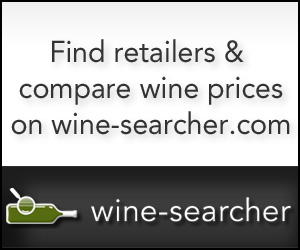“Ingredients: wine grapes & potassium metabisulfite.” These aren’t words we often see on a wine label. Might wine ingredient labeling be a good idea?
We’ve become so used to ingredient and nutrition labeling on food in the U.S. that we hardly even notice them anymore..But labeling isn’t required on wine, beer, or liquor labels, and the drinks industry apparently prefers it that way.
As I wrote in the March 15, 2019, Wine Advisor, wineries and trade organizations generally opposed labeling requirements for fear that consumers would be put off by discovering some of the less appetizing trace elements that might be in our wine.from eggshells or fish bladders, historically used to clarify wine, to modern ingredients like Mega Purple,used to impart a deeper, darker color. Not to mention oak chips or the much-feared sulfites.
Wine producers and lobby groups argued that yeast, wood, and unappetizing filtering and fining material don’t remain in the finished wine in which there’s nothing left ibut fermented grape juice and a tiny amount of sulfites that preserve the wine and keep it from spoiling.
In 2018, though, a consortium of nonprofit pressure groups including the Center for Science in the Public Interest, the Consumer Federation of America, and the National Consumers League, called for a new proposal for wine labeling. “Consumers of alcoholic beverages deserve the clear, consistent labeling that has long been available to other beverages,” the organizations argued.
The push for nutrition labeling apparently fizzled, though, and today only a handful of producers offer this ingredient information in optional formats like the information I noticed on the label of this week’s featured wine, Field Recordings 2023 Santa Barbara County Super Gnario.
A few other producers offer more detail, thanks to a 2013 federal rule that allowed optional nutrient labeling on alcoholic beverage labels and advertising. The new rule permits, in its words, “Truthful, accurate, and specific voluntary statements about nutrient content, including calorie and carbohydrate content, in the labeling and advertising of wines, distilled spirits, and malt beverages.”
The broader issue of required nutrient labeling remains alive- though. TTB has proposed a rule that would require ingredient labeling for the specific purpose of alerting consumers to possible allergens in wine, spirits, and malt beverages. If it goes forward, producers would be required to comply within five years after a final rule is published in the Federal Register.
Required nutrition and ingredient labeling may still be on the horizon. “Nutrition and Ingredient Labeling for U.S. Wine is Coming,” headlined a article by Michael S. Lasky in Wine Business Monthly on March 1, 2024. “While it may take some time, wineries should be aware of potential new legislation.”
Lasky pointed out that historically, when the European Union creates wine protocols, the United States eventually mirrors those rules because of the importance of international trade. The EU has mandated that all wine produced after Dec. 8, 2023, must include energy (similar to “calories” ) information on its packaging, with off-label fat, carbohydrates, protein, and salt information.
What’s your take on ingredient labeling? Whether you’re in the industry or a consumer, are you in favor of having this information on the wine bottle? Join the conversation on Substack Chat!
Now, as for the oddly named, ingredient-labeled, and quite delicious Field Recordings 2023 Super Gnario: Since I buy all the wines I review at retail and do not accept wine samples or other gratuities from the industry, I count on the support of paid subscribers to help cover the cost of the wines I review. So, I have to reserve wines over about $20 behind a subscription paywall. If you haven’t become a full subscriber yet, I’d love to have your support. Click here for information on our paid-tier edition. Our free-to-all edition featuring a quality wine for $20 or less will return in its biweekly cycle next week.

Support The 30 Second Wine Advisor with your paid-tier subscription. For $5 per month or $50 for a year (a 17% saving), you’ll receive additional wine notes funded by your subscriptions, gain quick direct access through Substack for wine-related questions, and gain my real appreciation for your support.





